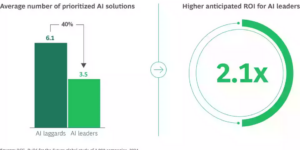Economic uncertainty and volatility, in combination with COVID-19-related losses, is leading to a heightened level of cautiousness among property reinsurers unless pricing and terms and conditions meet specific thresholds, according to Lara Mowery, global head of distribution, Guy Carpenter.
For example, she said, reinsurers at midyear renewals, “had, in some cases, mandates to reduce exposures and proceed with caution.”
“The midyear of 2020 catastrophe renewals experienced the lowest percentage of excess reinsurance authorization we’ve calculated in eight years,” said Mowery during Guy Carpenter’s virtual media briefing last week, titled “The Changing Nature of Risk.” (The briefing was held in lieu of meetings at the reinsurance Rendez-Vous de Septembre, which was canceled as a result of the COVID-19 crisis).
Looking ahead to the Jan. 1, 2021 renewals, she said, there is an expectation that they “will be more complicated and that negotiations will take longer than the norm.”
“One aspect of this that contributes to the duration of the process is the increased differentiation we have seen in renewal outcomes,” she said, noting that the industry has “continued to become more sophisticated in this respect.”
“Given the recent challenges in the market, many cedents have significantly reshaped their own portfolios. There are new stories to dig into and updated data profiles that will tell an evolving story,” Mowery added.
A Challenging Jan. 1 Renewal Process
As a result, the reinsurance market response at Jan. 1 is expected “to reflect significant differentiation and individualized cedent outcomes.”
David Priebe, chairman of Guy Carpenter, pointed to the added pressures from long-tail lines, which have seen increased loss frequency and severity, and are “squeezing carrier margins as social inflation drives loss cost trends higher.”
“However, the industry is responding by driving significant insurance rate increases in areas of distress, increasingly disciplined risk selection, and capacity deployment,” he said during the press briefing.
“Underlying insurance profitability is critical for the sustainable insurance and reinsurance marketplace,” he added.
Even before the COVID-19, said Mowery, the industry experienced unexpected loss development with Hurricanes Irma and Michael in Florida, which have continued to develop over a more prolonged timeframe; the recent years of California wildfires; the overlapping events in Japan and the loss development that followed those storms.
“Then when climate change considerations were layered in on top of this, reinsurers and investors alike were already making changes to their approach” even before the coronavirus crisis, she said.
“The pandemic has been significant in the reinsurance market because it is affecting both sides of the balance sheet. Clearly, there’s been a lot of focus on the claims side impact, but don’t forget the asset side has been impacted as well,” said Mike Van Slooten, head of Business Intelligence at Aon’s Reinsurance Solutions business, during Aon’s virtual press briefing last week.
That market reality is reflected in the sector’s half-year results when the combined ratio for the global Aon Reinsurance Aggregate (ARA) come in at 104.1% during in the first six months, he added. (Aon tracks the financial performance of 23 major global reinsurers).
[Visit the Big Re, Carrier Management’s reinsurance hub, for complete reinsurance coverage. Launched during the week of what would have been the Reinsurance Rendez-Vous de Septembre, this special page aims to provide complete reinsurance coverage of, by and for reinsurance professionals and buyers— including news, features, interviews, commentaries, whitepapers, videos, webinars and more.]
That includes almost 10 points of losses and reserves established for COVID-19 on the property-casualty side of the business, which is “significant impact,” Van Slooten said.
“There is still uncertainty around the ultimate extent and the distribution of those losses across the industry, but I think I’ve seen enough to conclude that the ultimate burden is likely to be manageable as far as the industry is concerned,” he said.
Certainly, $8 billion in COVID claims can be expected within the ARA group of companies, compared to the overall industry loss estimates, which are in the ballpark of $50 billion to $60 billion, Van Slooten noted.
There are a lot of incurred, but not reported reserves, in those figures, probably 80% of the total at this point, he said.
As a result, there either “is a lot more to come, or perhaps, the overall market loss isn’t going to be quite as big as people were expecting,” Van Slooten continued.
Investment Returns
The 104% combined ratio indicates that the industry is making an underwriting loss in the first half of the year, while on the investment side, COVID-19 led to dramatic falls in interest rates in the UK and the U.S., which were slashed to virtually zero back in March, he said.
Clearly that is going to affect “investment returns going forward and really the market as a whole is going to have to adjust to what that means for business models…,” he added.
These low interest rates have translated into an investment return of about 2.1%, which was the lowest since the financial crisis, Van Slooten noted.
Pressure on both the investment side and underwriting side means that these major reinsurers overall reported a negative return on equity of minus 1.5%, which was a loss of $1.1 billion, he said.
“[W]e’ve been through a difficult period from an earnings perspective because of the big catastrophe losses we’ve seen in recent years. COVID-19 has undermined earnings in 2020 as well,” Van Slooten affirmed.
Van Slooten said these hits to underwriting performance and investment returns are likely “to translate into greater underwriting discipline going forward.”
Further, some negative rating actions during 2020 were “strongly correlated” with perceived underwriting underperformance, relative to peers, he said.
“Yes, there is uncertainty around COVID. Yes, there are still some downside risks … around major loss activity between now and [year-end]. Perhaps there’s the potential for more turmoil in the capital markets, depending on the news flow around COVID,” he said.
Industry Has Demonstrated Resilience
However, Van Slooten said, the encouraging news is that “the industry has demonstrated a lot of resilience.”
Not only have a number of players in the industry been able to access the capital markets (to be able to take advantage of hardening market conditions), but it is “clear that there is still a lot of capacity in the market,” he indicated.
“We see a lot of reinsurers who are talking about growth,” Van Slooten affirmed.
At the half-year, while dedicated reinsurance capital was down by just over 2%, according to Guy Carpenter and AM Best estimates. Priebe noted there already has been $28 billion of capital raised by insurance and reinsurance market participants “to bring additional capital to the sector.”
“We have a lot of clients who have the need for additional reinsurance. I think we’re seeing growing exposures around the world and we’re seeing higher risk awareness, which is translating into a higher demand for reinsurance,” said Van Slooten, noting that there is every reason to believe that cedents will be able to achieve good outcomes during the renewals.
*This story ran previously in our sister publication Insurance Journal.





















 How We’re Doing It: Boosting Corporate Culture and Customer Experience
How We’re Doing It: Boosting Corporate Culture and Customer Experience  Is State Farm General Too Big to Fail? Calif. Rate Hearing Concludes
Is State Farm General Too Big to Fail? Calif. Rate Hearing Concludes  Today’s Commercial Property Market in ‘Better Place’: Brokers
Today’s Commercial Property Market in ‘Better Place’: Brokers  2024 Second on Record for Most Tornadoes in the U.S. in a Year
2024 Second on Record for Most Tornadoes in the U.S. in a Year 







